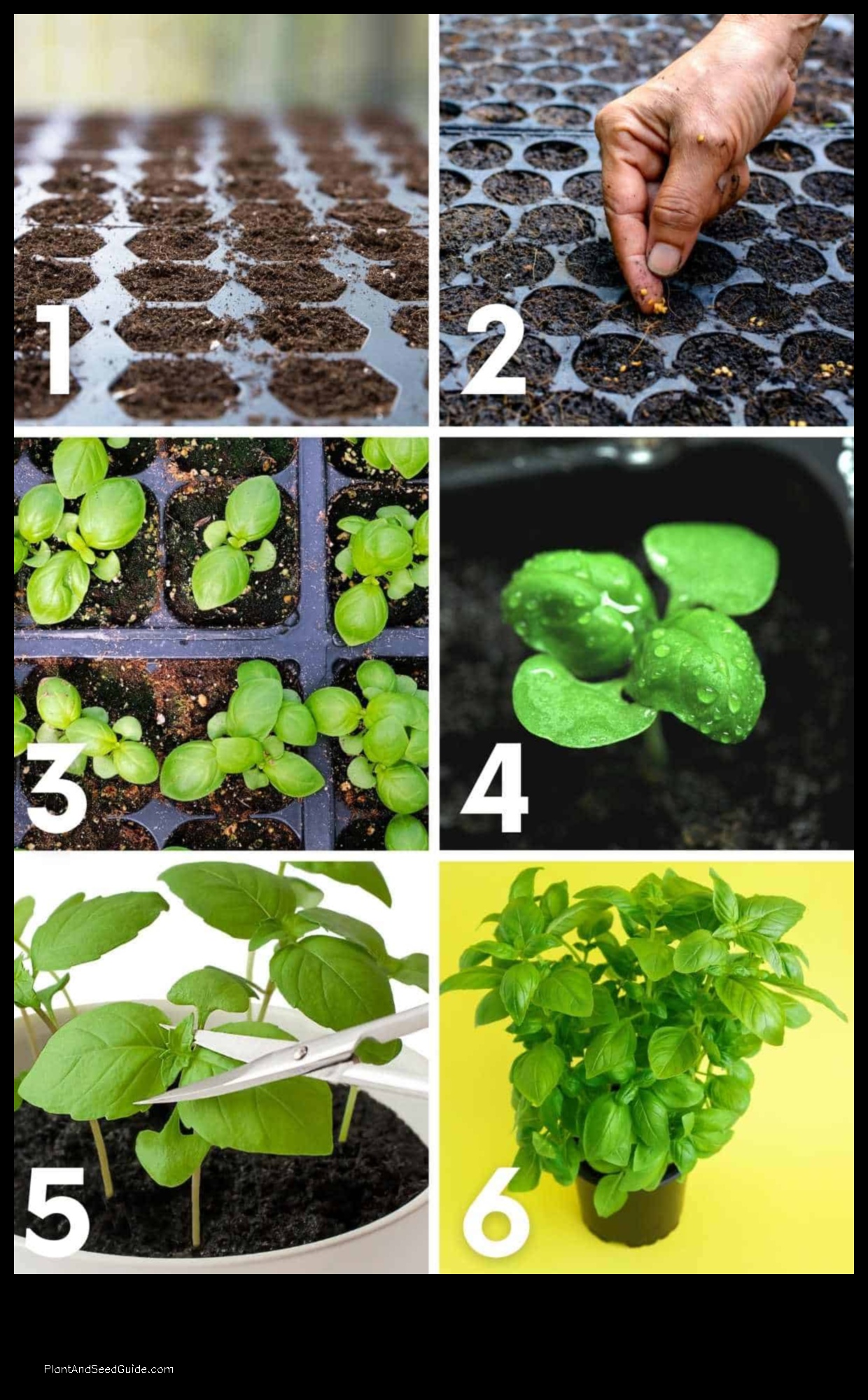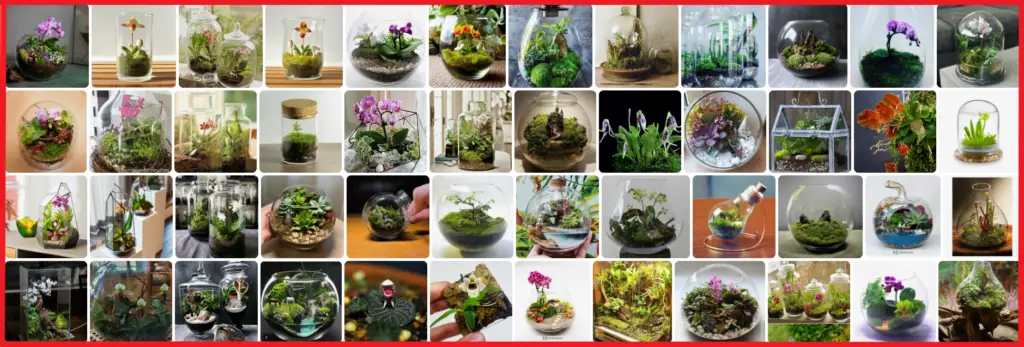

How to Repot Basil
Basil is a popular herb that is easy to grow at home. However, if your basil plant is starting to outgrow its pot, it may be time to repot it. Repotting basil is a simple process that can help your plant to thrive.

When to Repot Basil
The best time to repot basil is in the spring or early summer. This is when the plant is actively growing and will be able to adjust to its new pot more easily.
How to Repot Basil
To repot basil, you will need the following materials:
- A new pot that is about 2 inches larger than the current pot
- New potting soil
- A trowel or spoon
- Water
To repot your basil plant, follow these steps:
Loading... Seconds Left for
Miniature Orchid Terrarium Gallery!

- Gently remove the basil plant from its current pot.
- Loosen the roots of the plant by gently teasing them apart.
- Place the basil plant in the new pot.
- Fill in the pot with new potting soil, leaving about an inch of space at the top.
- Water the basil plant thoroughly.
n id="What_Size_Pot_Do_You_Need_for_Basil">What Size Pot Do You Need for Basil?
The size of the pot you need for basil will depend on the size of the plant. A small basil plant can be grown in a 6-inch pot, while a larger plant will need a 10-inch pot or larger.
What Kind of Soil Do You Need for Basil?
Basil prefers a well-draining soil that is rich in organic matter. You can use a commercial potting soil or make your own soil mix by combining equal parts of potting soil, compost, and perlite.
How Much Water Does Basil Need?
Basil needs to be watered regularly, but it is important not to overwater it. The soil should be moist, but not soggy.
Basil needs full sun to thrive. A sunny spot in your garden or on your patio is ideal.
How to Fertilize Basil
Basil can be fertilized monthly with a balanced fertilizer. You can also use a liquid fertilizer or a slow-release fertilizer.
Pests and Diseases of Basil
Basil can be susceptible to a number of pests and diseases, including aphids, mites, whiteflies, and powdery mildew. If you notice any pests or diseases on your basil plant, you can treat it with a commercial insecticide or fungicide.
FAQ">FAQ
Q: How do I know if my basil plant needs to be repotted?
A: If your basil plant is starting to outgrow its pot, it is time to repot it. You can also tell if your basil plant needs to be repotted if the roots are starting to grow out of the drainage holes in the pot.
Q: How often should I repot my basil plant?
Basil plant
s should be repotted every year or two.
Q: What is the best time to repot basil?
The best time to repot basil is in the spring or early summer.
Q: What siz
e pot do I need for basil?
The size of the pot you need for basil will depend on the size of the plant. A small basil plant can be grown in a 6-inch pot, while a larger plant will need a 10-inch pot or larger.
Q: What kind of soil do I need for basil?
Basil prefe
rs a well-draining soil that is rich in organic matter. You can use a commercial potting soil or make your own soil mix by combining equal parts of potting soil, compost, and perlite.
<
| Feature |
Answer |
| Basil |
A herb of the mint family, Ocimum basilicum. |
| Repot |
Transplant a basil plant from its original pot to a larger one. |
| Plant |
Grow a basil plant from seed or a cutting. |
| Grow |
Provide the right conditions for basil to grow, such as sunlight, water, and fertilizer. |
IWhen to repot basil
Basil should be repotted when it has outgrown its current pot and the roots are starting to grow out of the drainage holes. This is usually when the plant is about 6-8 inches tall.
You can also repot basil if the soil in the pot has become depleted of nutrients. This can happen if you have not been fertilizing the plant regularly, or if the soil is old and has lost its ability to hold nutrients.
If you are
not sure if it is time to repot your basil plant, you can check the roots.
Gently remove the plant from the pot and look at the roots..
If the roots are tightly packed together and there is no more room for them to grow, then it is time to repot the plant.
How to repot basil
To repot basil, you will need:
- A new pot that is at least 2 inches wider and deeper than the old pot
- Fresh potting soil
- A trowel or spoon
- Water
To be
gin, gently remove the basil plant from its old pot. Be careful not to damage the roots.
If the roots are tightly bound together, loosen them gently with your fingers or a fork.
Place the basil plant in the center of the new pot. Add soil around the roots until the plant is level with the top of the pot.
Water the b
asil plant thoroughly.
Place the basil plant in a sunny spot and water it regularly.
Your basil plant should be happy in its new pot and will soon start to grow new leaves.
What_size_pot_do_you_need_for_basil">What size pot do you need for basil?
The size of pot you need for basil depends on the size of the plant. A small basil plant can be grown in a 4-inch pot, while a larger plant will need a 6- or 8-inch pot. If you are not sure what size pot to use, err on the side of a larger pot. Basil plants like to have plenty of room to grow.
What kind of soil do you need for basil?
Basil does best in well-drained soil that is rich in organic matter.
A good soil mix for basil would be equal parts potting soil, compost, and perlite..
You can also add a handful of worm castings to the soil to help improve drainage and nutrient content.
Basil does not like to be overwatered, so it is important to make sure that the soil is well-drained. If the soil is too wet, the roots of the basil plant will rot.
Basil also
likes to be in full sun, so it is important to choose a location for your basil plant that gets plenty of sunlight.
By following these tips, you can help your basil plant grow healthy and strong.
VHow much water does basil need?
Basil needs regular watering, but it is important not to overwater it. The soil should be kept moist, but not soggy. Basil plants will wilt if they are not watered enough, but they can also suffer from root rot if they are overwatered.
ear:both; margin-top:0em; margin-bottom:1em;">See also
Insider Tips for Growing Tangerine Trees



